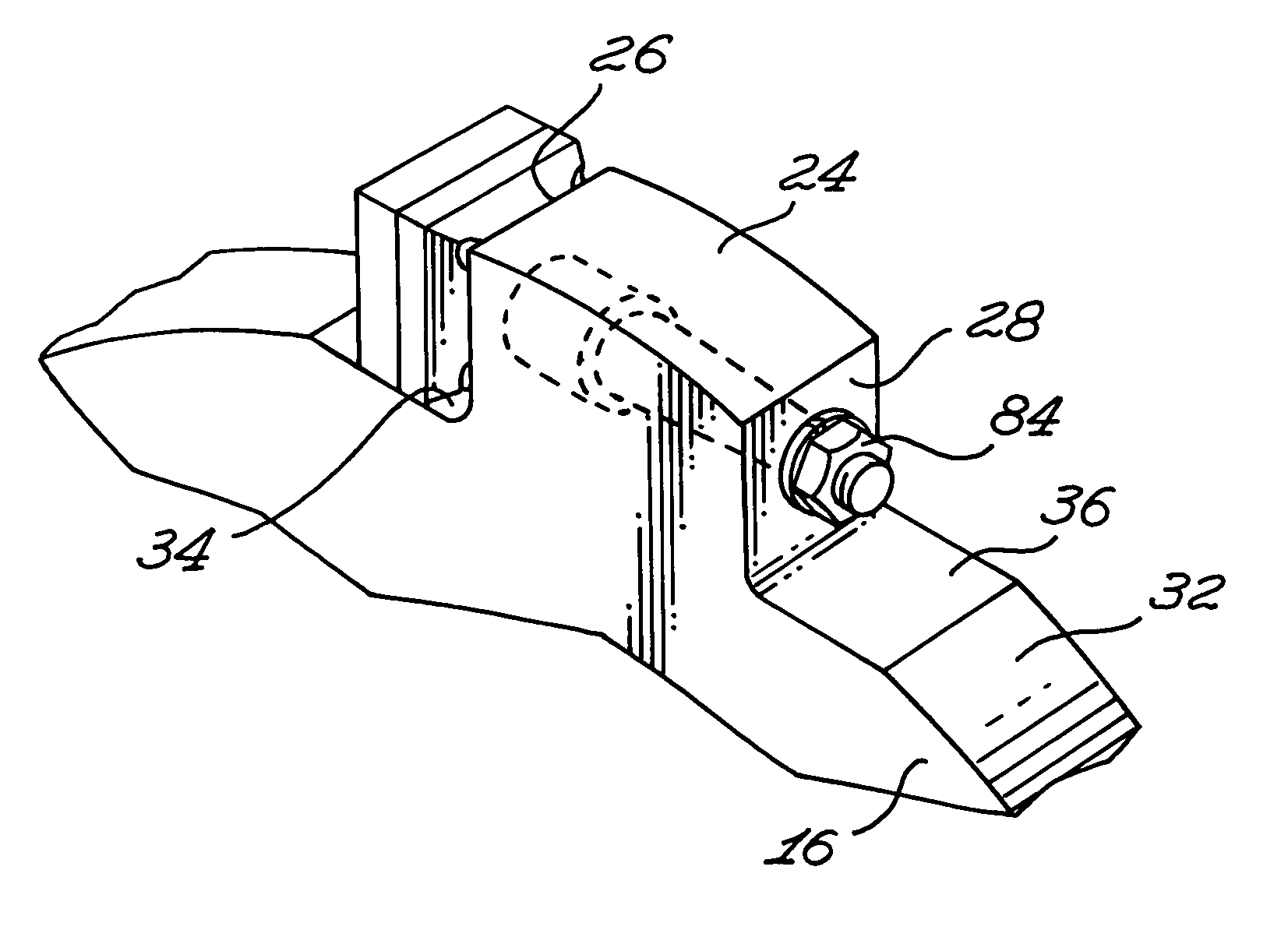Grinder cutter tooth and anvil assembly
a technology which is applied in the field of grinding cutter and anvil, can solve the problems of reducing the service life affecting the efficiency affecting the quality of the grinding cutter, so as to reduce the service time and the associated cost. , the effect of a longer tim
- Summary
- Abstract
- Description
- Claims
- Application Information
AI Technical Summary
Benefits of technology
Problems solved by technology
Method used
Image
Examples
Embodiment Construction
[0045]Referring to FIG. 4, there is shown a grinder 10 including a rotor 12 rotatable about the corresponding rotor axis. The rotor 12 includes a plurality of alternately small and large diameter breaker rings 14, 16. Each breaker ring 14, 16 carries at least one breaker head 18. In turn, a tooth assembly 22 is carried by each breaker head 18.
[0046]The tooth assemblies 22 and corresponding breaker heads are arranged to pass adjacent anvils 20. Typically, larger anvils 20 define relatively small spaces for the passage of the breaker heads 18 and teeth assemblies 22 of smaller diameter breaker rings 14 while smaller anvils 20 define larger spaces for the breaker heads 18 and teeth assembly 22 or larger breaker rings 16.
[0047]Typically, if desired, smaller diameter breaker rings 14 and their corresponding breaker heads 18 can be displaced inwardly of the outer periphery of larger diameter breaker rings 16 so that the larger anvils 20 protrude into the spaces between the larger diameter...
PUM
 Login to View More
Login to View More Abstract
Description
Claims
Application Information
 Login to View More
Login to View More - R&D
- Intellectual Property
- Life Sciences
- Materials
- Tech Scout
- Unparalleled Data Quality
- Higher Quality Content
- 60% Fewer Hallucinations
Browse by: Latest US Patents, China's latest patents, Technical Efficacy Thesaurus, Application Domain, Technology Topic, Popular Technical Reports.
© 2025 PatSnap. All rights reserved.Legal|Privacy policy|Modern Slavery Act Transparency Statement|Sitemap|About US| Contact US: help@patsnap.com



